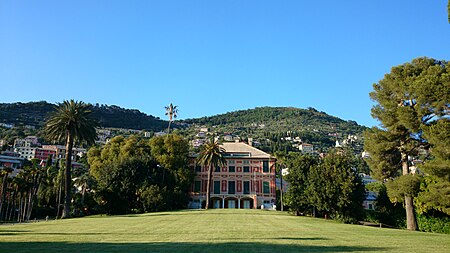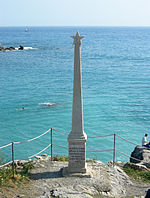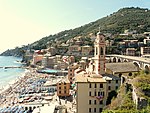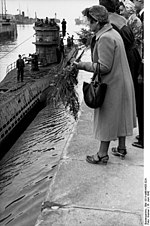Villa Grimaldi Fassio
Cultural heritage of ItalyGardens in LiguriaHistoric house museums in ItalyMuseums in GenoaTourist attractions in Liguria ... and 1 more
Villas in Nervi

The Villa Grimaldi Fassio is an 18th-century rural palace, now museum, and rose garden located on Via Capolungo 9 of Nervi, the eastern coastal quarter of the city of Genoa, region of Liguria, Italy. The property was purchased by the municipality of Genoa, is part of a series of parks and museums of the Gallerie d'Arte Moderna (GAM or Modern Art Gallery) which include the Giannettino Luxoro Museum, the Wolfsonian Museum, and the museum at Villa Saluzzo Serra. The Villa Grimaldi Fasso is the home of the Raccolte Frugone since 1993.
Excerpt from the Wikipedia article Villa Grimaldi Fassio (License: CC BY-SA 3.0, Authors, Images).Villa Grimaldi Fassio
Via Capolungo, Genoa Levante
Geographical coordinates (GPS) Address Website Nearby Places Show on map
Geographical coordinates (GPS)
| Latitude | Longitude |
|---|---|
| N 44.38138 ° | E 9.04773 ° |
Address
Raccolte Frugone
Via Capolungo
16167 Genoa, Levante
Liguria, Italy
Open on Google Maps









